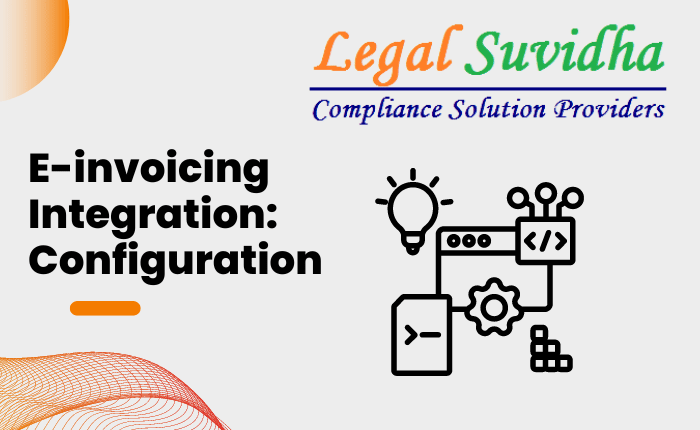As organizations adopt electronic invoicing (e-invoicing) within their operations, integrating this functionality with existing Enterprise Resource Planning (ERP) platforms becomes crucial for seamless financial processes. However, every organization has unique requirements and workflows, necessitating customization and configuration options for e-invoicing integration with ERP platforms. In this blog, we will explore the significance of customization and configuration, as well as key options available to organizations to tailor e-invoicing integration to their specific needs.
1. Flexible Data Mapping:
Effective e-invoicing integration requires mapping the data fields from the ERP system to the e-invoicing platform. Customization options should include the ability to map and transform data fields based on the organization’s specific requirements. This flexibility ensures that relevant information, such as customer details, product descriptions, and pricing, is accurately transferred from the ERP system to the e-invoicing platform. Organizations should have the ability to define these mappings and update them as needed, allowing for seamless data synchronization between systems.
2. Workflow Automation:
Customizing the e-invoicing integration with ERP platforms should include the ability to automate workflows based on the organization’s existing processes. This may involve defining approval hierarchies, automatic invoice matching, and exception-handling rules. By configuring these workflows, organizations can ensure that e-invoices follow the same approval and verification processes as traditional invoices, streamlining the overall invoicing process and maintaining compliance with internal controls and regulatory requirements.
3. Integration with Financial Systems:
ERP platforms often encompass various financial systems, such as accounts receivable, accounts payable, and general ledger. To achieve comprehensive integration, organizations should have customization options that allow seamless connectivity between e-invoicing and these financial systems. This includes the ability to post e-invoices directly to the appropriate accounts, update customer balances, and reconcile transactions automatically. By configuring the integration with financial systems, organizations can eliminate manual data entry, minimize errors, and ensure accurate financial reporting.
4. Multi-Lingual and Multi-Currency Support:
For organizations operating in multiple countries or serving international clients, customization options for e-invoicing integration should include support for multiple languages and currencies. The ability to customize templates, invoice layouts, and language preferences ensures that e-invoices are generated in compliance with local regulations and are easily understandable by recipients. Additionally, multi-currency support enables accurate conversion and reporting of invoices, facilitating international business operations.
5. Compliance and Legal Requirements:
Different countries and industries have specific compliance and legal requirements for invoicing. Customization options should allow organizations to configure the e-invoicing integration to adhere to these requirements. This may include incorporating mandatory data fields, tax calculations, digital signatures, and archiving protocols. Customizing the integration ensures that e-invoices generated within the ERP system meet the legal and regulatory standards of the relevant jurisdictions.
6. Reporting and Analytics:
Customization options for e-invoicing integration should encompass reporting and analytics capabilities. Organizations should have the flexibility to define and generate customized reports on e-invoicing activities, invoice statuses, payment trends, and outstanding balances. This allows organizations to gain valuable insights into their invoicing processes, identify bottlenecks, and make data-driven decisions to optimize cash flow and improve overall financial management.
Training and Support Strategies for Smooth Adoption of e-Invoicing within ERP Systems
In recent years, there has been a significant shift towards digitization and automation of business processes. One area that has experienced a major transformation is invoicing. Traditional paper-based invoicing systems are being replaced by electronic invoicing (e-invoicing) within Enterprise Resource Planning (ERP) systems. E-invoicing offers numerous benefits, such as cost savings, increased efficiency, reduced errors, and improved data accuracy. However, to ensure the smooth adoption of e-invoicing within ERP systems, organizations must implement effective training and support strategies. We will explore some key strategies that can help organizations successfully transition to e-invoicing.
1. Comprehensive Training Programs:
To facilitate the adoption of e-invoicing, organizations should provide comprehensive training programs to their employees. These programs should cover various aspects of e-invoicing, including the technical aspects of using the ERP system, generating and sending e-invoices, and understanding the new workflow. The training should be tailored to different user roles within the organization, such as accounts payable/receivable personnel, finance managers, and procurement teams. It should also include hands-on exercises and real-life scenarios to ensure practical understanding and application of the knowledge gained.
By offering comprehensive training programs, organizations can equip their employees with the necessary skills and knowledge to effectively use the e-invoicing features within the ERP system. This will help eliminate any confusion or resistance to change and ensure a smooth transition to the new invoicing process.
2. User-Friendly Interface:
The ERP system’s user interface plays a crucial role in the successful adoption of e-invoicing. It should be intuitive, user-friendly, and designed with the end users in mind. A complex or confusing interface can create frustration and hinder the adoption process. On the other hand, a well-designed interface that provides clear instructions and prompts can make it easy for users to navigate through the e-invoicing process.
Organizations should invest in usability testing to identify any pain points or areas of improvement in the interface. Gathering feedback from users during the testing phase and incorporating their suggestions can help refine the interface and ensure a seamless user experience. Continuous improvement of the interface based on user feedback will enhance user satisfaction and increase the likelihood of successful adoption.
3. Dedicated Support Channels:
During the transition to e-invoicing, it is essential to establish dedicated support channels to address any queries or issues that users may encounter. Users may face challenges while adapting to the new system or encounter technical difficulties that require immediate assistance. By providing readily accessible support channels, such as a dedicated helpdesk or support team, organizations can ensure that users receive prompt and effective support.
These support channels can be in the form of email, phone, or a ticketing system, depending on the organization’s preferences and capabilities. The support team should be well-trained and knowledgeable about the e-invoicing features within the ERP system to provide accurate guidance and solutions. Effective support will instill confidence in users and help them overcome any challenges they may face during the adoption process.
4. Communication and Change Management:
Clear communication is vital for the successful adoption of e-invoicing. Organizations should develop a communication plan that includes regular updates, training reminders, and the benefits of e-invoicing. Communication should be targeted at all levels of the organization, ensuring that everyone is aware of the upcoming changes and the reasons behind them.
Change management strategies should be implemented to manage any resistance to change and ensure buy-in from all stakeholders. This can involve conducting workshops, webinars, or town hall meetings to address concerns, clarify doubts, and provide a platform for open discussions. Engaging key stakeholders and involving them in the decision-making process will help create a sense of ownership and commitment toward the successful adoption of e-invoicing.
Regular communication should continue even after the initial implementation phase to address any concerns that may arise, gather feedback on user experiences, and share best practices. This will create a culture of continuous improvement and foster collaboration among users, promoting the long-term success of e-invoicing within the ERP system.
5. Continuous Improvement and Feedback:
E-invoicing within ERP systems is an ongoing process that requires continuous improvement. Organizations should encourage users to provide feedback on their experiences with e-invoicing and incorporate their suggestions for improvement. Regular evaluation of the e-invoicing system’s performance, including tracking key metrics like invoice processing time and error rates, can help identify areas for improvement and optimize the system’s efficiency.
Feedback can be collected through surveys, user forums, or one-on-one discussions. Analyzing this feedback and acting upon it will demonstrate the organization’s commitment to continuously enhancing the e-invoicing process. It will also empower users by making them feel heard and valued, thereby promoting their engagement and active participation in the e-invoicing adoption journey.
Conclusion:
Transitioning to e-invoicing within ERP systems offers numerous advantages for organizations, but it requires careful planning, effective training, and robust support strategies. By implementing comprehensive training programs, user-friendly interfaces, dedicated support channels, effective communication, and continuous improvement initiatives, organizations can ensure the smooth adoption of e-invoicing. This will ultimately lead to increased efficiency, cost savings, and improved overall financial processes within the organization. Embracing e-invoicing is a crucial step towards digital transformation and staying ahead in today’s rapidly evolving business landscape.
If You have any queries then connect with us at [email protected] or [email protected] & contact us & stay updated with our latest blogs & articles








